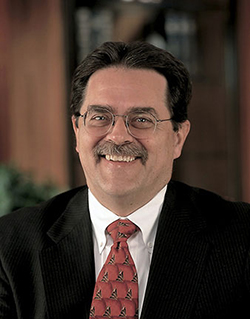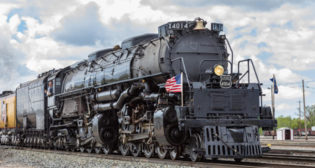
What Sticks, What Doesn’t
Written by Gil Lamphere
A Class I railroad delivers Total Shareholder Returns (TSR) of 13.5%-14.5% assuming a stable stock market. The assumptions are 3.5%-4% price increases, 2% volume increase tied to GNP growth and expense increases held to 3% or below. With these assumptions, EPS grows by 10-10.5%, a dividend adds 1.3%, and buybacks add another 2.5% or more because of their effect on EPS. The railroad’s stock sells at a P/E of 20+. Everyone is happy, and rightfully so.
But what about the “what if?” factor. In today’s and tomorrow’s environment, what if costs increase 5%? Prices “only” increase 2.5-3% for a host of reasons, most particularly poor service and pressures on rail customers to hold costs down. Volume growth is anemic. Doing the math tells us the railroad formula shifts into reverse. TSR falls by 35% +/–. The stock price falls proportionately.
The killer is cost, with price increases unable to exceed cost increases. The results are independent of “PSR” or “modified PSR” or “no PSR.” It’s about managing costs and making operating adjustments, turning fixed costs into variable costs, and running an “on-time” railroad with reliable service. You can call it “scheduled” or not. It’s also about how to justify price increases to customers who are under similar pressure to reduce costs, and who see railroads protected by fuel surcharges and labor contracts.
Will this situation last? Could it be worse? Must it be worse?
A large part of the answer is how management views and treats labor, and whether labor is an essential core of providing consistent, on-time service and not seen as so variable through economic ups and downs.
Labor has historically been treated as a retractable Elmer’s Glue Stick: hired, trained to remain stuck with the railroad and hold it together, but getting furloughed when the economic cycle turns down. That changed when the railroads’ Baby Boomers (people born between 1946 and 1964) retired with 30-40 years of experience, mainly following changes to the Railroad Retirement Act (full age annuities payable at age 60 to workers with 30 years of service; for those with less than 30 years, reduced annuities payable at age 62 and unreduced annuities payable at full retirement age, which is gradually rising from 65 to 67, depending on birth year). The Millennials (“Generation Y,” people born between 1981 and 1996), lacking institutional knowledge that requires years to develop, came on board with different expectations for rapid advancement after being trained. But they didn’t want to stay in one place anymore, let alone the railroad that had trained them and given them experience. They wanted and developed job options elsewhere. So much for restoking the institutional knowledge firebox.

Michael Ward, when he was Chairman and CEO of CSX, saw this coming. Ward recognized labor as an essential element of railroading. His transportation executives did too. Ward showed his Board of Directors the statistics and described the Millennials’ characteristics. His strategy was “we will meet the Millennials halfway.” One year after he took the initiative, he reported back to the Board of Directors on how his Millennial strategy was working. “Halfway is not working,” he said. “The Millennials win. They won’t compromise. We are the ones who have to adjust.”
Fast forward to 2020. COVID-19 hit. The railroads laid off large numbers of their essential work force. Labor, the retractable Elmer’s Glue Stick, was laid off. But then the red-hot recovery came. Shortages of qualified labor developed. But the labor force had options. Railroad volumes picked up, but the laid-off people were no longer available, having found work elsewhere. The railroads balanced system (PSR or not PSR) came unglued. The railroads allocated human resources to time-sensitive, reliability-dependent intermodal traffic. Other customers suffered. Railroads desperately tried to hire people, train them and deploy them. They’re still doing it, but it can’t happen fast enough. And as we all know, training, qualification and the safety practices that form the foundation of 24/7/365 railroading require lots of time—with which too many younger people aren’t willing to stick.
But then something else happened. As of today, a recession is possible. Will railroads be prone to bringing back labor less quickly? Will the operating system continue to falter?
A practical difficulty is that Wall Street loves a low labor number, which means lower expenses and higher profits. But Wall Street has a hard time realizing that current low labor figures are an artificial number, and has a hard time devaluing the railroad sector if it doesn’t run on time. And Wall Street is confused when the rails are scrambling to increase labor after years of Wall Street enjoying and rewarding increasingly lower labor figures produced by PSR or simple redundancy reductions.
What does it cost a hypothetical, medium-sized railroad to increase labor enough to run an on-time, reliable operation (not including one-time recruiting, training and integration costs)? Let’s say a railroad needs 1,500 new people, and fully burdened pay is $70,000 per person on an ongoing basis. The annual cost is $105 million pretax, or $76.7 million after tax. At a price earnings ratio of 18x, that equates to $1.38 billion of shareholder value. For a $70 billion market cap railroad, this figure represents 2% of the company’s market value. That equates to $0.70 per share on a hypothetical $35 stock price. To put that $0.70 per share figure in perspective, it equates to what the stock price varies in a week, if not a day.
Hopefully we are all learning that labor should not be the retractable Elmer’s Glue Stick, but the Super Glue necessary to permanently hold a railroad’s complex network and on-time function together, binding a highly efficient, balanced, on-time railroad together. Wall Street needs to get off its short-term-focused posterior and accept the fact that railroading is a complex, long-term outdoor game that requires experienced, robust players on a permanent team. This is especially true if rail wants to blend the competitive dynamic growth of intermodal with its traditional, semi monopolistic bulk commodities business and maybe even grow carload business. Much like capex, labor is the permanent capital in which railroads need to invest.

Gil Lamphere, Chairman of MidRail LLC, has nearly 40 years of experience as a principal investor and financier in rail industry and other private equity transactions. He has headed four private equity firms and has extensive operational experience as a Chairman and/or board member for a wide range of publicly traded and private companies. Lamphere is the former Chairman of the Illinois Central Railway, Co-Founder of MidSouth Rail Corporation and former board member of CN (Chair of the Finance Committee and a member of the Compensation, Investment, and Audit committees), CSX (Operations, Finance, Compensation, and Public Affairs committees), and Florida East Coast Railway. He led teams and boards that bought, managed and changed operations at Illinois Central, MidSouth, CN, Florida East Coast and Southern Pacific, with alumni leading Canadian Pacific, creating gains for investors in excess of $2 billion.



